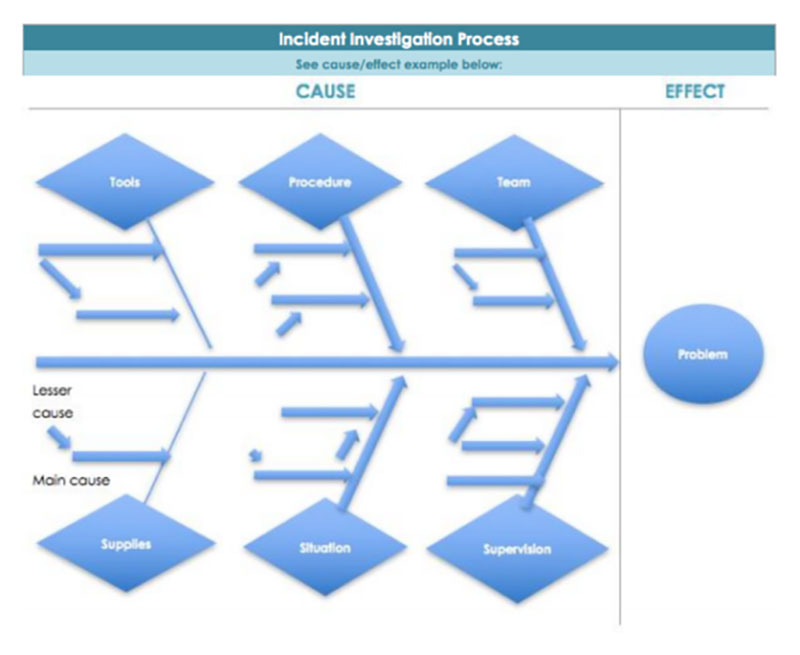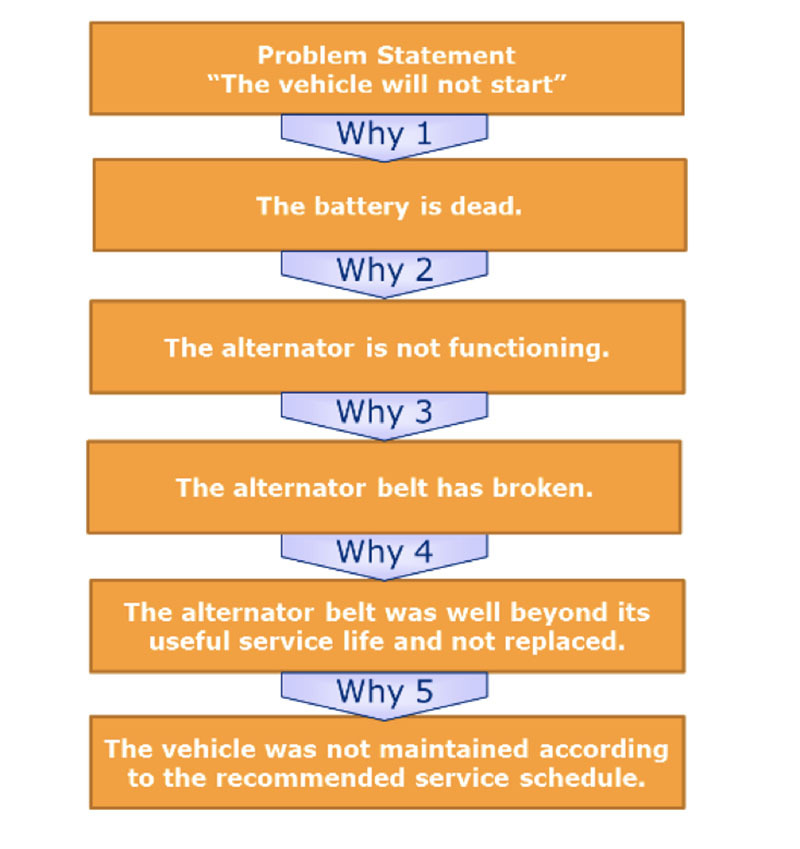7 free Root Cause Analysis templates (and how to use them)
Root Cause Analysis templates have nothing to do with plants. But, they’re certainly something any and every aspiring businessperson should dig into. This article is about how to do a little business gardening to help prevent long-term, potentially corrosive, problems from damaging your corporation.
You know those problems that just keep cropping up every other week, the ones that leave you puzzled and perplexed with an annoying sense of déjà vu? The ones you’re sure you showed to the back door last Friday, but no, they’ve made an unwelcome appearance again early Monday morning?
Sometimes the reason we keep finding ourselves back at square one is because we’re not asking the right questions to solve a communication breakdown. Sometimes the question shouldn’t immediately be: what is the solution? It should be: why does this keep happening?
You need to find the germ before you can create the cure; you need to dig up the roots before you can stop the weeds from spreading.
When we stumble upon a problem, our instinctive response is to try and find a solution rather than identify what the root of the problem is. While on the surface finding an immediate remedy is somewhat time-efficient and satisfying, it doesn’t necessarily lead to the best long-term results.
If you don’t know what the origin of the problem is, how can you stop it from recurring in the future? Again, and again, and again...?
Root Cause Analysis templates are the method and the means to uncover the big “Why?”. Root Cause Analysis forms don’t ask: “How do we solve this?”, they ask: “Why has this happened?”. They allow you to collect a sample of data related to a particular issue. This data allows you to work out why the problem came about.
What form does a Root Cause Analysis template take? What do these reports even look like?
Don't worry, you don't have to memorise any complicated HR metrics to conduct a root cause analysis. To begin with, these reports are much less complicated than the name suggests – you don’t need a degree in business to understand them. A RCAT, often known as a root cause corrective action template, usually takes the following simple structure:
- A description of the event itself
- The timeline leading up to the event (what went wrong)
- The investigative team (those involved in the procedure)
- The methods used
This template structure can be stripped down and pumped up depending on the gravity and size of the problem. For instance, for simpler issues, your corrective reports won’t require as much detail. You want to record a short explanation, list the potential causes, and report why the solution was or was not successful.
For a more complex issue, the report will naturally be more detailed when it comes to recounting the problem, its defects, how often they occurred and why.
One method which can be used for more complicated cases is the Six Sigma DMAIC Methodology Root Cause Analysis report.
Six Sigma is a disciplined, data-driven approach used to eliminate business faults. It's a method proven to provide organisations with both powerful and exceedingly efficient tools. These tools improve how corporations function on a day to day basis.
In a nutshell, Six Sigma is all about focusing on how a given project is managed and ensuring systematic improvement of this project, depending on your people management skills.
While the tongue-tying title Six Sigma DMAIC Methodology Root Cause Analysis report suggests something from a futuristic sci-fi saga, the report isn't rocket science. It’s actually pretty easy to grasp.
‘DMAIC’ is an acronym which explains the various steps involved in effective business problem solving:
DM = Define and measure: This section attempts to understand the difference between what the original aim was and the actual outcome. In short, comparing the difference between expectation and result. For instance, what happened, when and where, and who was impacted. This can be done by analysing the difference between the VOC and the VOP, also known as the voice of the customer and the voice of the process.
A = Analyse: DMAIC analysis looks at using the above data to understand the cause-and-effect relationships. Figuring out the cause and its concomitant effect can help prevent the problem from recurring.
IM = Implement and control: The final two letters focus on what the potential solution to the problem is: what can be done and what are the benefits of this corrective action? Likewise, how can this solution be monitored in a way that prevents the problem from rearing its ugly head again in the future?
Ultimately, the goal of the Six Sigma Method is to identify as many factors as possible related to the root cause of the problem in the business.
Six Sigma Method
These can easily be made with an excel document, a flow chart or a simple word document. A flow chart of a Six Sigma Method might look a bit like this:

Source
Root Cause Analysis template Excel
While a Root Cause Analysis excel document may take the following format:

Source
Here are a few more quick and easy to replicate examples of simple Root Cause Analysis templates. They can be made into neat lists or more structured diagrams to suit your own leadership style and management skills.
Fishbone diagram
This is a design that divides ideas into suitable categories. The fishbone diagram is used to identify the different potential causes of a problem or an effect.

Source
Read next: One-to-one meeting template: The ultimate guide for managers
Pareto chart
This is perhaps better known as a bar graph. The Pareto chart depicts factors according to their significance. To use Pareto Analysis, you need to identify and list the problems and their causes. Then, you can score each problem individually and group them together by their cause. This is a clear, visual way to compare various factors contributing to any given problem.

Source
Scatter diagram
Scatter diagrams can be used to help you find the relationship between respective factors and influences. A scatter diagram charts numerical data pairs with a variable on each axis.

Source
All these Root Cause Templates can be found online for free. They’re a fail-safe, goof-proof method that costs nothing.
But before you start hacking away at these templates, there are still a few things you need to consider first. One of them is the notorious 5 Whys worksheet. There isn’t really just one big why. There are multiple whys which we must ask ourselves in order to peel away the different layers of the problem to get to the root.
The Root Cause Analysis formate can only effective if we ask ourselves the right questions. And sometimes, you may have to ask many, many questions to arrive at the most revealing one. Keep following the scent, and don’t relax too soon.
For example, a customer is unhappy with their product and the delivery of said product. What can you ask yourself? Maybe… Why is the customer unhappy? Why is there a problem with the delivery? Why has there been a problem with the manufacturing of the product? Why has this not been avoided? Why did they not meet said customer’s expectations? Whilst some ‘whys’ may seem less significant than others, it’s important to keep asking ‘why’ until the origin of the problem has been identified. This can be useful for the analysis section of any RCAT format.
Five whys
This can be organised into a simple brainstorm worksheet, like the following layout:

Source
There is nothing stopping any businessperson from using Root Cause Analysis templates. If you don’t have the time to put together a template, many can be accessed online for free. The templates are reliable, priceless additions to your business strategy. If used correctly and consistently, they could bring you significant, longstanding business enhancing results.



Share